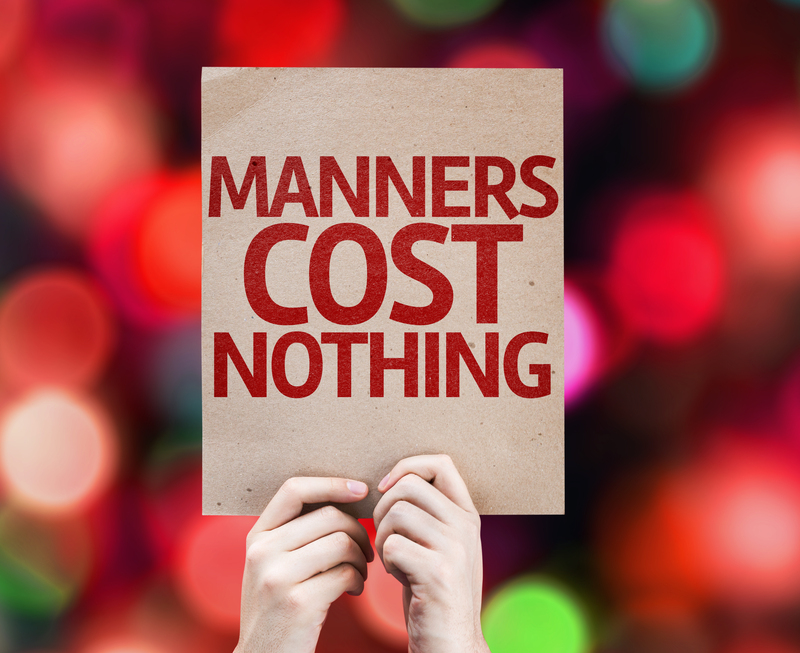Complete Guide to Safely Moving Your Mattress
Posted on 25/05/2025
Complete Guide to Safely Moving Your Mattress
Are you planning a move and wondering how to safely transport your mattress? Whether you're relocating across town or to a new city, your mattress is one of the most valuable and used pieces of furniture you own. Ensuring it arrives at your new home clean, undamaged, and ready for restful sleep is essential. In this comprehensive guide, you'll learn various safe mattress moving methods, expert tips, and best practices for every type of mattress.
Why Take Special Care When Moving a Mattress?
Moving your mattress isn't as simple as carrying any other piece of furniture because mattresses have unique construction, weight, and flexibility concerns. Mattresses can be susceptible to:
- Bending and sagging if handled incorrectly
- Tears and punctures from sharp objects or rough handling
- Mildew or dirt exposure when not adequately protected
- Damage to inner springs or support foam
All of these issues can dramatically reduce the comfort and lifespan of your mattress, so safe handling is crucial.

Preparing Your Mattress for Moving
Proper preparation is the key to moving your mattress safely. Follow these essential steps:
1. Strip Your Mattress
Remove all bedding including sheets, blankets, mattress protectors, and pillows. Launder these separately and pack away to keep everything clean and easy to reorganize at your destination.
2. Clean and Air Out
Give your mattress a quick vacuum to remove dust, hair, or crumbs. If you have time, let it air out for several hours--this is your chance to give it a fresh start before sealing it up!
3. Inspect for Damage
Look for signs of wear, tears, or infestations (such as bed bugs). Moving is an ideal time to address any underlying issues and decide if it's time to upgrade your mattress.
4. Choose the Right Mattress Bag
The most important protective tool for your mattress is a sturdy, waterproof mattress bag. These are available in different sizes to fit Twin, Full, Queen, or King mattresses. Choose a thick plastic bag, as thinner bags can rip during transport.
- Seal with heavy-duty packing tape for an airtight, dust-proof seal
- Consider double-bagging for long-distance or wet-weather moves
How to Move a Mattress: Step-by-Step Instructions
Let's walk through the main mattress moving process, so your sleeping investment arrives safe and sound.
1. Gather Your Tools and Helpers
- Mattress bag or plastic wrap
- Moving blankets for extra padding
- Ratcheting straps or strong rope
- Hand truck or furniture dolly (optional, but very helpful for large mattresses)
- Sufficient help--Queen and King-size mattresses are heavy and awkward. Never attempt to move a large mattress alone!
2. Cover and Secure Your Mattress
Slide the mattress into the bag and seal it tightly. If you're using moving blankets, wrap them around the bagged mattress for extra cushioning against bumps and knocks.
3. Plan Your Route
Before lifting, walk your path from bedroom to moving vehicle. Remove obstacles and measure doorways, hallways, and stairwells to verify the mattress will fit through. It's much easier to solve these issues before you start carrying!
4. Lifting and Carrying
- Bend at the knees, not the waist, to protect your back.
- Keep the mattress upright whenever possible. Don't drag it on the ground.
- Take breaks and communicate with your helpers--move slowly to prevent injuries and accidents.
- For stairs, one person should direct from below while another steadies from above.
5. Loading the Mattress into a Truck or Van
Place the mattress along a wall of the moving truck to maximize space. Transport it standing on its side, not flat, if possible, to prevent crushing. Secure with moving straps or rope so it can't slide or fall during transit.
- Avoid placing heavy objects on top of the mattress.
- If stacking is unavoidable, use extra padding and stay within the manufacturer's weight limits.
Tips for Moving Specific Mattress Types
Not all mattresses are the same! Construction and material affect how you should move each mattress safely.
Memory Foam Mattresses
- Can bend and fold, but avoid excessive folding which can cause permanent damage.
- Use a sturdy mattress box for long-distance moves to prevent drooping.
- If rolling, be sure not to crease too tightly; follow manufacturer's advice if available.
Innerspring Mattresses
- Keep flat whenever possible, as bending can deform springs.
- Never fold in half -- transport upright instead.
Hybrid Mattresses
- Handle as you would a traditional innerspring mattress for best results.
- Protect with bags or boxes, and avoid heavy pressure during transport.
Latex Mattresses
- Are heavy and floppy; always use at least two people.
- Best moved flat in a mattress box for full protection.
Adjustable or Split Mattresses
- Transport each section separately if possible.
- Take extra care with mechanical bases--wrap carefully to avoid damaging the motors or wiring.
How to Move a Mattress Without a Truck
No moving truck? Here are a few alternative mattress moving options:
- Pick-up Truck: Place mattress flat, securely cover, and use bungee cords or ratchet straps. Never let the mattress flap in the wind--this can ruin its structure or fly off on the road.
- On a Car Roof: Only for short distances and smaller mattresses. Wrap tightly in plastic, then secure with strong rope through windows (not just tied to roof racks). Drive slowly!
- Professional Movers or Delivery: Consider hiring professionals if you don't have safe vehicle options. Some companies offer "mattress only" transport.
Unpacking and Setting Up Your Mattress
Once you arrive at your new home, the final steps ensure your mattress is ready for a great night's sleep.
1. Inspect Your Mattress
Take the mattress carefully out of the bag and check for any damage, stains, or odors. If you see anything concerning (like a rip or strange smell), document it with pictures, as this may be important if you used movers or have insurance.
2. Air it Out
Allow your mattress to air for several hours before putting on new bedding, especially if it's memory foam or latex. This helps release any trapped moisture or odors that might have developed during transport.
3. Place on the Bed Frame
Carefully position the mattress onto your bed frame or foundation, making sure everything is centered and supported. Double-check for correct alignment to avoid sagging or uneven support.
4. Reinstall Bedding
- Use fresh, clean sheets and bedding.
- Vacuum or wipe down your bed frame if needed before assembly.
- If using a mattress protector (recommended), put it on first to shield against future spills or dust.
How to Move a Mattress Up or Down Stairs
Stairs can present a serious challenge for mattress transport. Here's how to manage this tricky task:
- Measure first: Ensure the mattress can fit and maneuver through turns or landings.
- Communicate clearly: Use "Ready", "Stop", and "Turn" calls between you and your helpers.
- Keep the mattress upright and balanced between two people. Move slowly and never rush on stairs.
- Protect walls and railings with moving blankets to prevent scrapes and scuffs.
Common Mistakes to Avoid When Moving a Mattress
Move your mattress the right way by steering clear of these frequent mistakes:
- Dragging the mattress on the ground, which can tear fabric or collect dirt.
- Attempting to lift heavy mattresses solo--this risks both your back and the mattress.
- Skipping protection--always use a mattress bag even for short moves.
- Leaving the mattress outside or in a damp vehicle, leading to mold or mildew growth.
- Placing the mattress on its edge for extended periods (except for very short transport)--this can cause inner materials to shift.
Should You Hire Professionals to Move Your Mattress?
For expensive, oversized, or specialty mattresses, or if you're not physically able to move heavy objects, hiring professional movers can be worth the investment. Movers will have the proper equipment and experience to move your mattress without damage. Take this option seriously if:
- You have a California King, hybrid, or heavy latex mattress
- You need to negotiate difficult staircases or tight multi-story apartments
- You want to maintain mattress warranty protection (some require professional handling for moves)
Storing a Mattress After Moving
If you need to store your mattress temporarily before setting it up in your new home, keep these tips in mind:
- Store flat whenever possible: This prevents foam or innersprings from deforming.
- Choose a climate-controlled space: Humidity and extreme temperatures promote mold or bacteria growth.
- Leave in the mattress bag: This protects from dust, pests, and moisture.
- Elevate off cold, damp floors: Use pallets or a bed frame to keep air circulating around the mattress.

FAQs About Safely Moving Your Mattress
Can I fold my mattress for moving?
Only if manufacturer guidelines allow it; memory foam and some hybrid mattresses can be folded briefly, but innerspring and latex models may be damaged by folding. Always check your mattress type.
Is it safe to transport a mattress on a car roof?
For short distances and smaller mattresses, yes--with careful wrapping and secure tie-downs. For long distances or highways, it's much safer to use a moving truck or hire professionals.
How do I protect my mattress from bed bugs during the move?
Always use a sealed mattress bag. Avoid placing your mattress on floors, sidewalks, or in shared moving trucks without protection.
Should I buy a new mattress instead of moving my old one?
If your mattress is over 8 years old, sagging, or uncomfortable, moving may be a good opportunity to upgrade. Otherwise, careful transport helps maximize your investment.
Conclusion: Ensuring a Restful Night in Your New Home
Your mattress is one of your most important possessions for comfort and wellness. Learning how to move your mattress safely protects it from harm and ensures you're ready to enjoy healthy, restorative sleep in your new home. With this complete mattress moving guide, you can relocate your bed like a pro--no hassles, no damage, and no sleepless nights!
```





